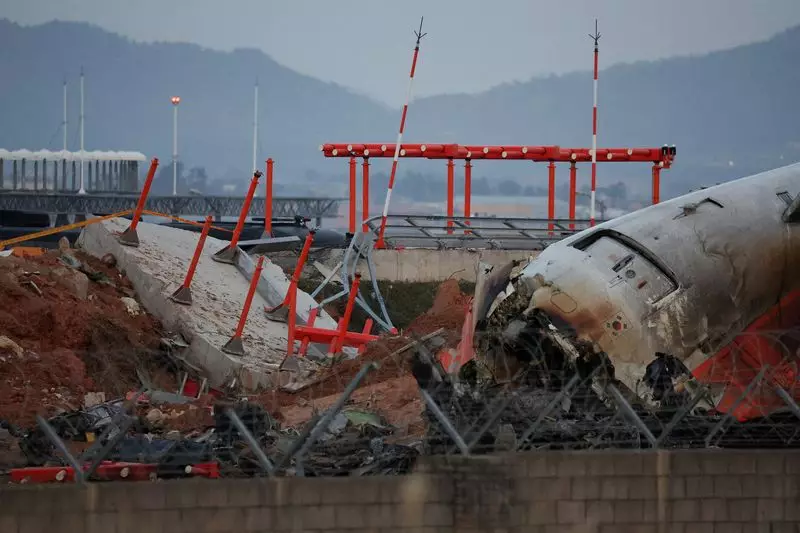The recent tragedy involving Jeju Air flight 7C2216, which resulted in the loss of 179 lives, marks a somber chapter in South Korean aviation history. Occurring on December 29, this incident has emerged as the deadliest air disaster on South Korean territory, prompting an extensive inquiry into the contributing factors. As authorities gear up to release a preliminary report, key questions linger, particularly regarding the possible implications of bird strikes encountered during the flight’s landing approach.
In a statement from the South Korean transport ministry, investigators have highlighted the potential role of a bird strike in the tragic event. The pilots initially reported observing birds flying beneath the Boeing 737-800 just moments before declaring a mayday. Alarmingly, the aircraft collided with a flock of birds while executing a go-around maneuver. Preliminary insights obtained from airport surveillance footage confirm the aircraft’s interaction with birds, though detailed analysis is still pending to ascertain the exact moments of impact. The predicament underscores a critical need to scrutinize wildlife management practices surrounding the airport to mitigate such risks in the future.
The South Korean government is not operating in isolation; it is actively collaborating with investigative teams from the U.S. National Transportation Safety Board and France’s Bureau of Enquiry and Analysis for Civil Aviation Safety. As per protocol, the forthcoming report will be shared with various international aviation authorities, including those from the United States, France, and Thailand. This collaborative effort is indicative of the global aviation community’s commitment to improving safety standards and protocols by learning from past mistakes.
In-depth technical investigations are crucial to uncovering the precise causes behind this catastrophe. Flight data and cockpit voice recordings are vital elements that will take several months to analyze. Unfortunately, the last recording from the cockpit ceased just over four minutes before the crash, raising concerns about information gaps that may hinder the investigation. Additionally, the discovery of bird remains in the aircraft’s engines suggests a harrowing encounter that needs further examination to truly understand its impact on the disaster.
Another dimension to this incident involves the concrete embankment that supported navigation antennas, raising concerns about its role in exacerbating the disaster. Experts assert that this structure likely increased the severity of the crash. In light of this assessment, the South Korean authorities have decided to remove the embankment, which serves as a pivotal learning point for other airports to consider modifications to infrastructure to enhance safety.
As South Korea reflects on this tragic event, all eyes will be on the forthcoming preliminary report and its recommendations. It is clear that lessons from the Jeju Air disaster must inform future aviation policies and safety measures. Prioritizing rigorous wildlife management and reassessing airport infrastructure will be essential steps in ensuring that such a tragedy never unfolds again. The collective grief of the nation bestows upon stakeholders an urgent impetus to act decisively, ensuring that the memories of the passengers and crew inspire enduring changes in aviation safety.

